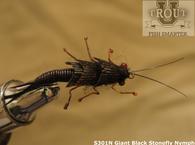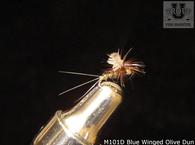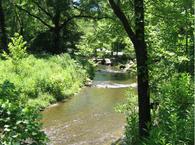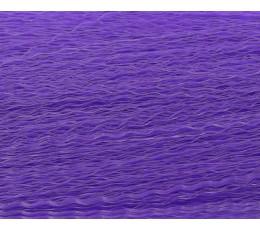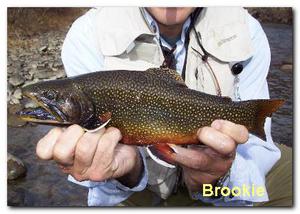
The trout streams in the North Carolina and Tennesee mountains are small and often overgrown with vegitation. In these small streams, the spinner is useless and it is almost impossible to get a fly into the target area. If you are able to hit the water, there is not enough "runway" in the pool to get the spinner blade spinning with sufficient intensity to attract a trout, and you may not be ble to retrieve the fly either. But, worst of all, they are often overgrown with the dreaded rhododendron as are many streams in South Mountain State Park. I am convinced that God placed poison ivy and the dreaded rhododendrons in those mountains to preserve the wild trout population.
 Rhododendron
Rhododendron
For those of you not familiar with these beautiful plants, they have large glossy leaves and small supple branches. The leaves are great at snagging and holding the hooks, while the branches are exactly the right size for the hook to engage them. I am telling you this to share with you the frustrations of trout fishing in those beautiful mountains.
One day, while fishing in those mountains and under considerable stress, from those pesky beautiful rhododendrons, I came across an older gentleman of the mountains. After, chuckling at my frustration, he told me of the cane pole technique. He said that in years gone past, the mountain fishermen used a cane pole to reach in to the hard to get, but highly productive, small pools overgrown by those fearsome and dreaded rhododendrons.
Here is what he told me. Purchase a simple cane pole that comes in about 3 sections, and after being assembled, is about 9 or 10 feet in length. The pole usually comes as a kit, with line, a bobber and a hook. Discard all that, and replace the line with a light 4 pound monofilament line. The line should not be any longer than the pole itself, and perhaps a good deal shorter for manageability. At the end of the line, tie a hand tied fly that might, imitate a terrestrial insect. Often times, we use a fly to imitate an ordinary house fly or ant.
To use the cane pole technique, simply approach the stream from downstream looking upstream. Here, it is important to use considerable stealth so as not to spook the trout, which is often at the end of the pool. The trout is trying to catch some morsel of food prior to it's leaving the and flowing downstream, so he is unaware of your presence.
Take the pole and place it so the line is dangling about one to three inches over the unsuspecting trout. The fly should be in front of the trout by a few inches, so it will be in his line of sight. Next, and here is where the mountain expertise comes into play, start swinging the fly over the water in a figure eight, keeping it at the same height. This will excite the trout and you will often see him dart to and fro under, or near the fly. You can imagine his saliva flowing as he gets excited! At this point, he will leap in the air as high as he can to catch the fly. This is fun to watch as they will often jump as much as 4 or 5 inches into the air. If he misses on the first try, keep doing the figure eight over his head until he can not resist another attempt. My son and I have caught some brown trout as long as 16 inches in streams that would appear to be too small or inaccessible. Now, go out and give it a try; and good luck!


